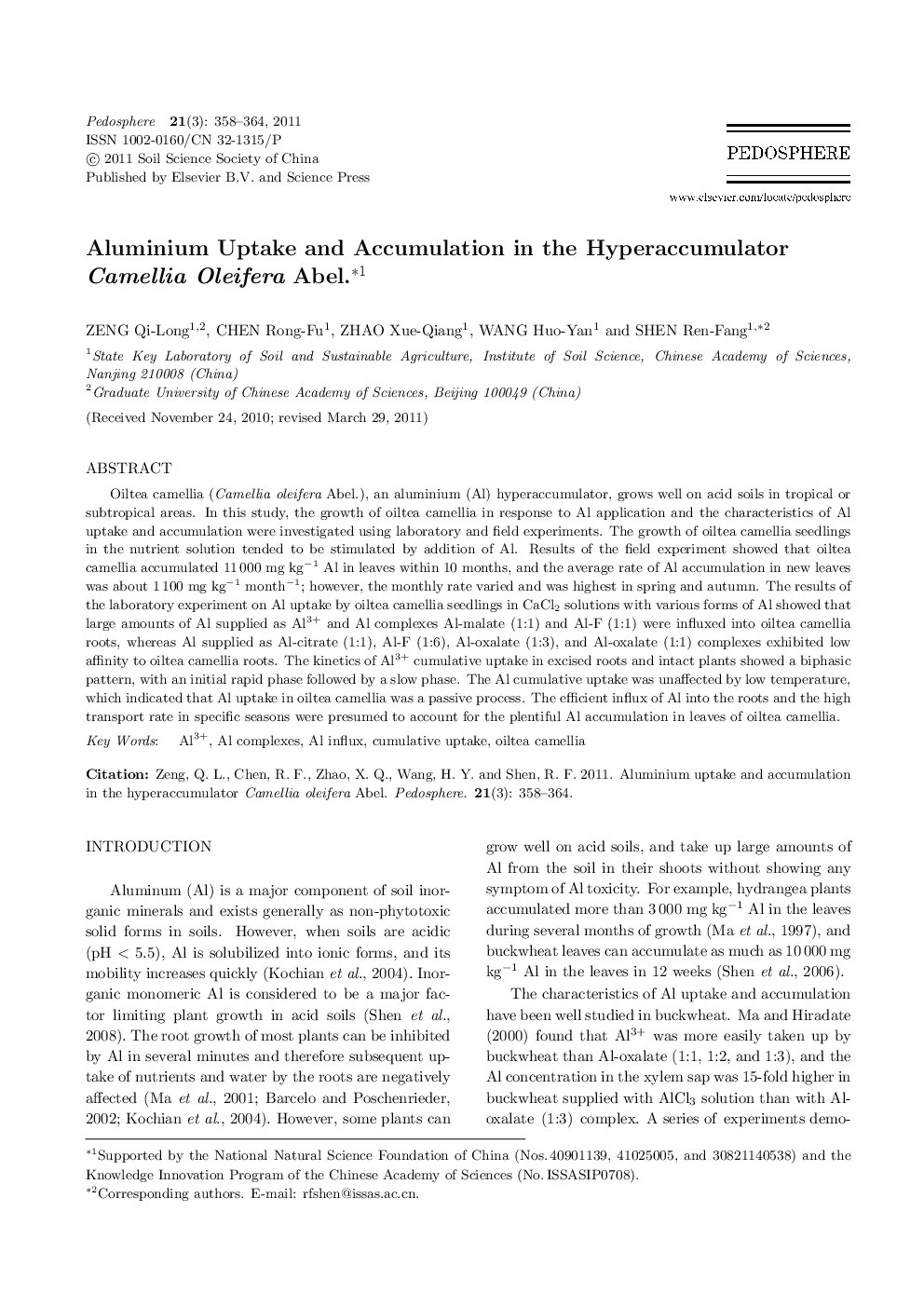| کد مقاله | کد نشریه | سال انتشار | مقاله انگلیسی | نسخه تمام متن |
|---|---|---|---|---|
| 4581930 | 1333727 | 2011 | 7 صفحه PDF | دانلود رایگان |

Oiltea camellia (Camellia oleifera Abel.), an aluminium (Al) hyperaccumulator, grows well on acid soils in tropical or subtropical areas. In this study, the growth of oiltea camellia in response to Al application and the characteristics of Al uptake and accumulation were investigated using laboratory and field experiments. The growth of oiltea camellia seedlings in the nutrient solution tended to be stimulated by addition of Al. Results of the field experiment showed that oiltea camellia accumulated 11 000 mg kg−1 Al in leaves within 10 months, and the average rate of Al accumulation in new leaves was about 1 100 mg kg−1 month−1; however, the monthly rate varied and was highest in spring and autumn. The results of the laboratory experiment on Al uptake by oiltea camellia seedlings in CaCl2 solutions with various forms of Al showed that large amounts of Al supplied as Al3+ and Al complexes Al-malate (1:1) and Al-F (1:1) were influxed into oiltea camellia roots, whereas Al supplied as Al-citrate (1:1), Al-F (1:6), Al-oxalate (1:3), and Al-oxalate (1:1) complexes exhibited low affinity to oiltea camellia roots. The kinetics of Al3+ cumulative uptake in excised roots and intact plants showed a biphasic pattern, with an initial rapid phase followed by a slow phase. The Al cumulative uptake was unaffected by low temperature, which indicated that Al uptake in oiltea camellia was a passive process. The efficient influx of Al into the roots and the high transport rate in specific seasons were presumed to account for the plentiful Al accumulation in leaves of oiltea camellia.
Journal: Pedosphere - Volume 21, Issue 3, June 2011, Pages 358-364